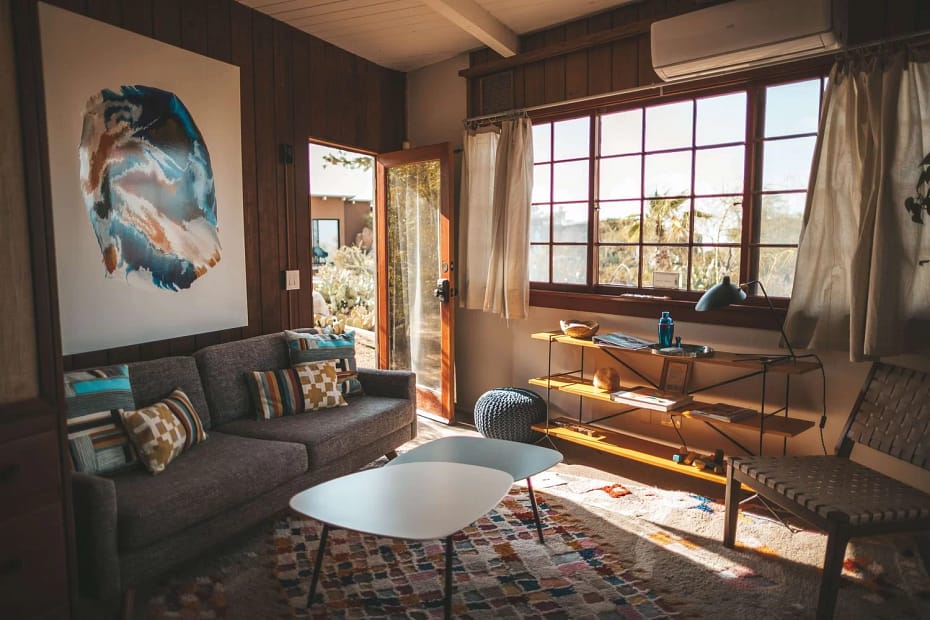Many people realize that living in smaller, well-designed, modern homes has many benefits.
They vary in quantity and quality, compared to larger traditional homes.
A smaller home has a lower construction and operating cost, and is easier to clean and maintain.
This ultimately leaves more time and money to spend on more important things, like family, friends, and hobbies.
A smaller, more efficient home can be just as comfortable, beautiful,
and inviting as a larger home, and it can be so without sacrificing style or amenities.
Successfully designing and building a small,
modern home requires not only acceptance on your part of the tiny living lifestyle but also designing an efficient home that is optimized to fit the way you live your life.
Here are some effective design strategies for modern small homes:

Create smart and efficient spaces
Open floor plan
In small homes we want the home to remain spacious and comfortable, so an open floor plan will make a small space feel larger than it is.
When designing small spaces, rooms can be opened to each other,
as the size of all areas is viewed as one large space, which increases its breadth.
Opening up the floor plan not only improves the flow between spaces,
but also allows for the enjoyment of borrowed light and views from other spaces and the outside.
You may be able to see outside views or enjoy daylight from multiple sides of the house through other spaces.
You can also save money on the cost of labor and materials needed to build walls.
It may be a good idea to remove internal walls between the kitchen and the dining or living areas, considering a mezzanine or double-height space open to the top.

Spaces, functions and multi-purpose furniture
As with the open floor plan the juxtapositions between spaces become more fluid and blurred by the removal of internal walls.
This allows greater flexibility in the use of space now and in the future.
Functions and even rooms can be combined to make spaces serve more than just one use.
And successful tiny house designs feature efficient floor plans, reducing wasted space and costly turnover.
The bathroom can be combined with a laundry room, as washing appliances can be hidden behind doors hidden from view.
This strategy not only saves space, but also reduces plumbing between appliances.
The office can also be a guest bedroom with a sofa that folds out into a bed or a Murphy bed that folds into the wall.
Instead of having a desk and a table, you can have one piece of furniture that works as both, or a built-in piece of furniture.
Hallways can also be eliminated completely by combining movement with other spaces or consider making the entryway a “library” with built-in shelving or bookshelves.
In addition to using architectural features such as stairs or masonry to provide separation between spaces rather than full height walls that appear closed.

Borrowed space
You should look for any possible way to make up for lost space when you have a smaller home.
But consider opportunities to borrow space from other areas and outside.
The wasted space under closed stairs can be used for storage or have built-in shelves.
If you have spaces where the ceiling penetrates the room resulting in a low ceiling, use this space for furniture or shelves.
An awkward corner in the living room can also be an ideal place for a small office.
Vaulted or high ceilings
You can use a modern roof with windows to provide more light and ventilation into the space.

Design simple and tidy spaces
A consistent design aesthetic
An effective strategy for small house interiors is minimalist design.
Successful small modern homes lend themselves well to simple, clean designs that allow spaces to breathe.
A simple material palette with simple design and detail can go a long way in making spaces feel welcoming.
Also, preserving the aesthetics of the single design and achieving harmony between materials and colors (there is nothing wrong with some distinct colors),
It will make spaces appear connected and spacious.
If you have small knick-knacks, consider displaying only a few at a time and rotating them every now and then.
It is also possible to use a small number of materials and stick to them in all spaces,
with a few distinctive materials when necessary.
More on INJ Architects:

